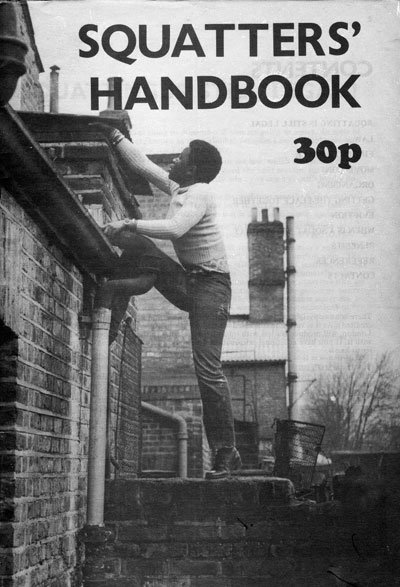To read the full post click on the title above
In 1979, the year of Olive Morris death, the Advisory Service for Squatters published the sixth edition of their Squatters Handbook. The cover of the booklet was graced with a picture of Olive climbing onto the roof of 121 Railton Road. This picture was taken during one of the attempted evictions of the squat, and several other pictures and news items about this particular eviction also appeared in the south London press.
Despite living side by side and having cordial relations, Black and White squatters did not organise themselves together. Liz Obi remembers that when they squatted 121 Railton Road, some white squatters came to help them turn on the gas and the electricity. During evictions some women from the ‘White Women Centre’ also came to show support, but that was as far as the relationship went. Black activists at the time were focused on the many specific issues affecting the Black community (police violence, discrimination in education and workplace, etc). The absence of joint activity might explain why in most accounts of the Brixton squatting movement written in later years, there are no references to the early Black squats of the 70s.
However, as the cover of the Squatters Handbook shows, in the late 70s Olive Morris was a well known and respected figure amongst White squatters.

I remember Olive Morris from the year I spent in Brixton in 1974=75. When I was in need of a place to live, Morris invited me to join her and her house mates in the squat where they were living at the time. I learned a lot about how the squatters movement negotiated the laws around evictions from Olive and her crew. I am glad that she is remembered and that her legacy is still alive.
Reblogged this on Wessex Solidarity.